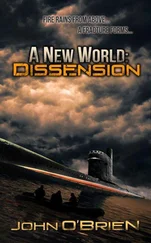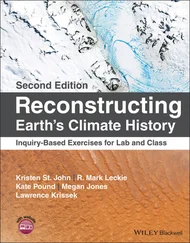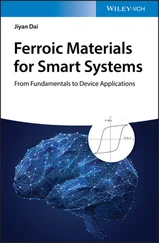John O'Brien - Earth Materials
Здесь есть возможность читать онлайн «John O'Brien - Earth Materials» — ознакомительный отрывок электронной книги совершенно бесплатно, а после прочтения отрывка купить полную версию. В некоторых случаях можно слушать аудио, скачать через торрент в формате fb2 и присутствует краткое содержание. Жанр: unrecognised, на английском языке. Описание произведения, (предисловие) а так же отзывы посетителей доступны на портале библиотеки ЛибКат.
- Название:Earth Materials
- Автор:
- Жанр:
- Год:неизвестен
- ISBN:нет данных
- Рейтинг книги:5 / 5. Голосов: 1
-
Избранное:Добавить в избранное
- Отзывы:
-
Ваша оценка:
- 100
- 1
- 2
- 3
- 4
- 5
Earth Materials: краткое содержание, описание и аннотация
Предлагаем к чтению аннотацию, описание, краткое содержание или предисловие (зависит от того, что написал сам автор книги «Earth Materials»). Если вы не нашли необходимую информацию о книге — напишите в комментариях, мы постараемся отыскать её.
Earth Materials,
Earth Materials,
Earth Materials — читать онлайн ознакомительный отрывок
Ниже представлен текст книги, разбитый по страницам. Система сохранения места последней прочитанной страницы, позволяет с удобством читать онлайн бесплатно книгу «Earth Materials», без необходимости каждый раз заново искать на чём Вы остановились. Поставьте закладку, и сможете в любой момент перейти на страницу, на которой закончили чтение.
Интервал:
Закладка:
1.3.1 Compositional layers
The layers within Earth that are defined largely on the basis of chemical composition ( Figure 1.1; left side) include the: (1) crust, which is subdivided into continentaland oceaniccrust, (2) mantle,and (3) core. Each of these layers has a distinctive combination of chemical, mineral, and rock compositions that distinguishes it from the others, as described in the next section. The thin crust typically ranges from 5 to 85 km thick and occupies <1% of Earth's volume. The much thicker mantle has an average radius of ~2885 km and occupies ~83% of Earth's volume. The core has a radius of ~3470 km and comprises ~16% of Earth's volume.
1.3.2 Mechanical layers
The layers within Earth defined principally on the basis of mechanical properties ( Figure 1.1; right side) include: (1) a relatively strong lithosphereof variable thickness to an average depth of ~100 km that includes all of the crust and the upper part of the mantle, (2) a weaker asthenospherethat extends to depths between ~100 and 660 km and includes a transition zone from ~400 to 660 km, and (3) a mesosphereor lower mantlefrom ~660 to 2900 km. The underlying core is divided into a liquid outer core(~2900–5150 km) and a solid inner corebelow ~5150 km to the center of Earth. Each of these layers is distinguished from the layers above and below by its unique mechanical properties. The major features of each of these layers are summarized in the next section.
1.4 DETAILED MODEL OF THE GEOSPHERE
1.4.1 Earth's crust
The outermost layer of the geosphere, Earth's crust, is extremely thin; in some ways it is analogous to the very thin skin on an apple. The crust is separated from the underlying mantle by a boundary called the Mohorovičić (Moho) discontinuity.Two major types of crust occur.
Oceanic crust
Oceanic crustis composed largely of dark colored, basic (45–52% SiO 2) rocks ( Chapter 7) enriched in oxides of magnesium, iron, and calcium (MgO, FeO, and CaO) relative to average crust. The elevated iron (Fe) content is responsible for the both the dark color and elevated density of oceanic crust. Oceanic crust is thin; the depth to the Moho averages 5–7 km. Under some oceanic islands, its thickness reaches 18 km. The elevated density and small thickness of oceanic crust cause it to be less buoyant than continental crust, so that it occupies areas of lower elevation on Earth's surface. As a result, most oceanic crust of normal thickness is below sea level and covered by sea water to a depth of several thousand meters. Oceanic crust consists principally of basic igneous rocks such as basalt and gabbro composed largely of the minerals pyroxene and calcic plagioclase. These dark‐colored, mafic igneous rocks comprise layers 2 and 3 of oceanic crust and are commonly topped with sediments that comprise layer 1 ( Table 1.1). An idealized profile of typical ocean crust consists of these three main layers, each of which can be subdivided into sublayers which are briefly discussed later in this chapter.
Oceanic crust is young relative to the age of the Earth (~4.55 Ga = 4550 Ma). The oldest ocean crust in the major ocean basins, less than 190 million years old (190 Ma), occurs along the western and eastern borders of the Atlantic Ocean and in the Western Pacific Ocean. Recently, still older oceanic crust that may be 340 Ma has been discovered in the eastern Mediterranean Sea (Granot 2016). Still older oceanic crust has largely been destroyed by subduction, but fragments of such crust are preserved on land in the form of ophiolites. Ophiolites contain slices of ocean crust thrust onto continental margins and provide evidence for the existence of Precambrian oceanic crust. The age of the oldest true ophiolites of Precambrian age remains controversial ( Chapter 18).
Table 1.1 Characteristics of oceanic and continental crust: a comparison.
| Properties | Oceanic crust | Continental crust |
|---|---|---|
| Composition | Dark colored, mafic rocks enriched in MgO, FeO, and CaO | Complex; many lighter colored felsic rocks |
| Enriched in K 2O, Na 2O, and SiO 2 | ||
| Averages ~50% SiO2 | Averages ~60% SiO2 | |
| Density | Higher; less buoyant | Lower; more buoyant |
| Average 2.9–3.1 g/cm 3 | Average 2.6–2.9 g/cm 3 | |
| Thickness | Thinner; average 5–7 km thickness | Thicker; average 30 km thickness |
| Up to 15 km under islands | Up to 80 km under mountains | |
| Elevation | Low surface elevation; mostly submerged below sea level | Higher surface elevations; mostly emergent above sea level |
| Age | Up to 190 Ma for in‐place crust | Up to more than 4000 Ma |
| ~3.5% of Earth history | 85–90% of Earth history |
Continental crust
Continental crusthas a much more variable composition than oceanic crust. Continental crust can be generalized as “granitic” in composition, and is enriched in K 2O, Na 2O, and SiO 2relative to average crust. Although igneous and metamorphic rocks of granitic composition are fairly common in the upper portion of continental crust, lower portions contain more rocks of intermediate dioritic and even basic gabbroic composition. Granites and related rocks tend to be light colored, lower density felsic rocks rich in quartz and potassium and sodium feldspars. Continental crust is generally much thicker than oceanic crust; depth to the Moho averages 30–40 km. Under areas of very high elevation, such as the Himalayas, its thickness approaches 85 km. The greater thickness and lower density of continental crust make it more buoyant than oceanic crust. As a result, the top of continental crust is generally located at higher elevations and the surfaces of continents with normal crustal thicknesses are above sea level. The distribution of Earth's land and sea is largely dictated by the distribution of continental and oceanic crust. Only the thinnest portions of continental crust, most frequently along thinned continental margins and in rifts, have surfaces below sea level.
Whereas modern oceans, with the exception of a small area in the Mediterranean Sea, are underlain by oceanic crust younger than 190 Ma, the oldest well‐documented continental crust includes 4.03 Ga rocks from the Northwest Territories of Canada (Stern and Bleeker 1998). Approximately 4 Ga rocks also occur in Greenland and Australia. Greenstone belts ( Chapter 18) may date back as far as 4.28 Ga (O'Neill et al. 2008) which suggests that continental crust began forming within 300 million years of Earth's birth. Individual detrital zircon grains, derived from the erosion of older continental crust, occur in metamorphosed sedimentary rocks in Australia. These zircons have been dated at 4.4 Ga (Wilde et al. 2001) an age recently confirmed by Valley et al. (2014). These data suggest that continental crust may have existed no more than 150 Ma after Earth formed. The great age of some continental crust results from its relative buoyancy. In contrast to ocean crust, continental crust is largely preserved as its density is generally too low for it to be subducted on as large a scale. Table 1.1summarizes the major differences between oceanic and continental crust.
1.4.2 Earth's Mantle
Интервал:
Закладка:
Похожие книги на «Earth Materials»
Представляем Вашему вниманию похожие книги на «Earth Materials» списком для выбора. Мы отобрали схожую по названию и смыслу литературу в надежде предоставить читателям больше вариантов отыскать новые, интересные, ещё непрочитанные произведения.
Обсуждение, отзывы о книге «Earth Materials» и просто собственные мнения читателей. Оставьте ваши комментарии, напишите, что Вы думаете о произведении, его смысле или главных героях. Укажите что конкретно понравилось, а что нет, и почему Вы так считаете.












